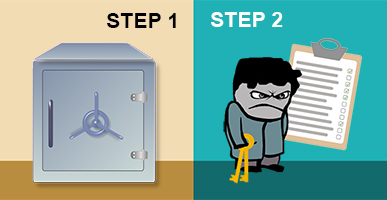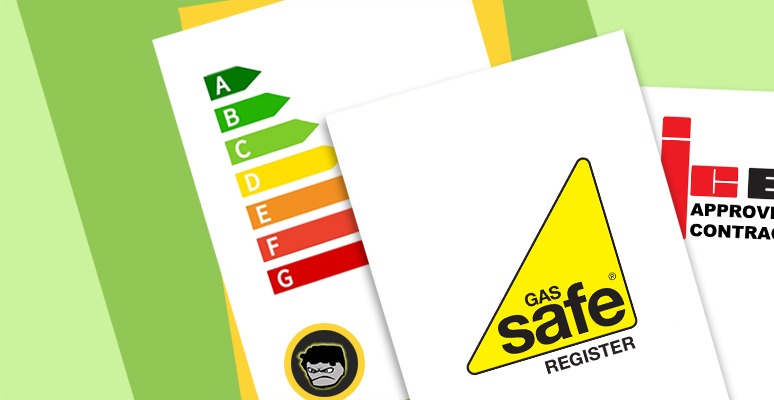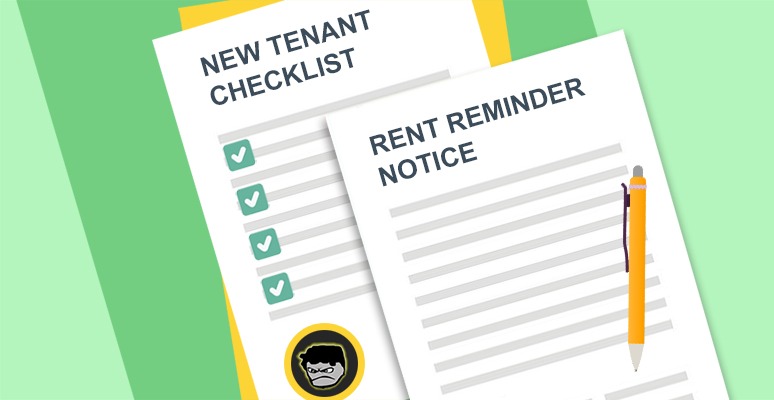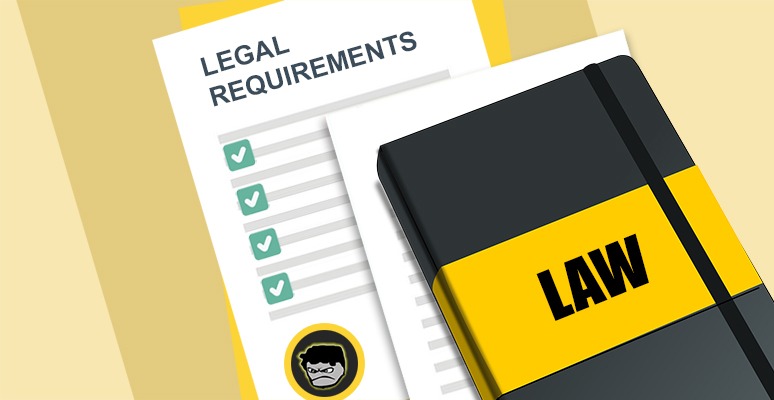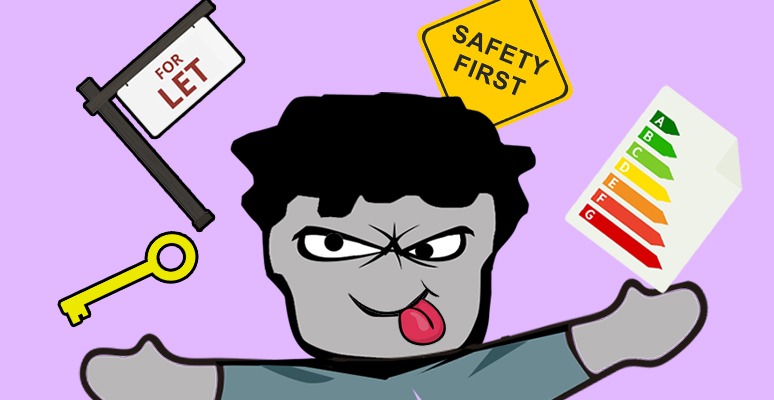
Page contents
- What is a tenancy deposit?
- Do I have to take a deposit from my tenants?
- How much deposit should/can I take?
- Property inventory/schedule of condition
- What is a Tenancy Deposit Scheme?
- Why was the Tenancy Deposit Scheme introduced?
- How does the Deposit Scheme work?
- What if my tenant is paying the deposit by instalments or in part?
- Once the deposit is protected / Serving Prescribed Information
- What Landlords are legally obligated to do with tenants deposit
- Who does the deposit scheme apply to?
- When do I need to return the deposit to my tenant?
- Is securing the deposit into a tenancy deposit scheme necessary?
- What if I don’t protect the deposit?
- Does the tenancy deposit scheme cost anything?
- Tenancy Deposit Scheme Legislation
- Tenant Security Deposit Articles
What is a tenancy deposit?
Landlords are entitled to request a deposit from tenants to cover any unforeseen costs that may occur, like damage to the property or rent arrears. The landlord can use the deposit these costs. However, it is important to note landlord’s cannot claim compensation for any damages that constitute as wear & tear, for example carpets wearing away. Bear in mind, the longer the tenant remains in occupancy, the more wear will naturally occur.
Do I have to take a deposit from my tenants?
Nope, it is not a legal requirement.
When it comes to deposits, landlords can preference one of the following options at the start of a tenancy:
- Don’t take a security deposit
- Take a security deposit (and secure it into a tenancy deposit scheme)
- Sign up to a No Deposit scheme – this is a new’ish initiative, whereby the landlord takes no deposit, but the tenant pays for a guarantee via a “No deposit” scheme, which protects their landlord for 6 – 12 weeks’ worth of rent.
If you don’t take a deposit, the rest of the article won’t apply to you. However, if you have an assured shorthold tenancy and take a deposit from a tenant, no matter how small, you are obligated by law to protect the deposit into a tenancy deposit scheme.
How much deposit should/can I take from my tenant?
Based on my experience, the typical rates are as follows:
- Non pet-friendly landlords will demand anywhere between 4 – 6 weeks’ rent for a deposit.
- Pet-friendly landlords will demand anywhere between 6 – 8 weeks’ rent for a deposit.
However, since the introduction of the “Tenant Fees Act 2019” on the 1st June 2019, landlords in England (regardless of whether their tenants have pets or not) are capped at taking no more than five weeks’ rent for the tenancy deposit where the annual rent is less than £50,000.
For example, if the rent is £600pcm, the calculation to determine the max deposit you can take is:
**600 (rent pcm) x 12 (months) = £7200
7200 (annual rent) / 52 (weeks) = £138.46
138.46 (weekly rent) x 5 (maximum weeks) = £692.3
There is six weeks’ rent cap where the total annual rent is £50,000 or above.
**Please note, the calculation is an example based on a one year tenancy and for demonstration purposes only. You should seek guidance from the deposit scheme you choose to secure your deposit with to assist in calculating the maximum amount you can request.
Property inventory/schedule of condition
It is always important to prepare a thorough property inventory whether you take a deposit or not. An inventory is a report which records the condition of the property/items before a tenant moves in and just before a tenant leaves, so it can be made clear what damages, if any, need to be paid for out of the deposit.
Both landlord and tenant should prepare the inventory together, so the condition of the property and all items are agreed upon. Here is a more detailed article on how to prepare a property inventory.
What is a Tenancy Deposit Scheme?
If any landlord has an assured shorthold tenancy in England and Wales and receives a deposit from their tenant, they are obligated to protect it into 1 of 3 Government-backed tenancy deposit schemes:
The deposit scheme will hold the deposit and release it at the end of a tenancy.
It is ALWAYS the landlord’s responsibility to ensure the deposit is protected, even if you use a letting agent.
Why was the Tenancy Deposit Scheme introduced?
Tenancy Deposit Protection (TDP) was introduced by the Housing Act 2004 as part of a package of measures to raise standards in the private rented sector. The legislation ensures that deposits are fairly handled; so if the tenant meets the terms of the tenancy agreement, the entire amount is returned. It also allows landlords to fairly use the deposit to cover any damages or loss of rent caused by the tenant. If any disputes occur, a dispute resolution service will aim to resolve them quickly.
How does the Scheme work?
There are two types of tenancy deposit protection scheme available for landlords and letting agents, insurance-based schemes and custodial schemes.
Insurance-based schemes
The tenant pays the deposit to the landlord and then the landlord retains the deposit and pays a premium to the insurer.
custodial schemes
The tenant pays the deposit to the landlord or agent and then they pay the deposit into the scheme. This option is most commonly used by landlords.
Once the deposit is protected / Serving Prescribed Information
The deposit must be protected with in 30 days of receiving the deposit (this may not necessarily be the same date as when the tenancy starts), the tenant must also be served prescribed information within 30 days [of also receiving the deposit], which includes:
- Address of the rented property
- The amount taken for the deposit
- Which deposit scheme was used to protect the deposit
- The contact details of the tenancy deposit scheme used and its dispute resolution deposit
- The name and contact details of any third party that’s paid the deposit e.g. Letting Agent
- How to apply to get the deposit back
- What to do if there is a dispute over the deposit
Serving the prescribed information is NOT merely a procedure, it is a legal requirement. Securing the tenancy alone is not enough. It has also been advised by a Solicitor to get tenants to sign a document to confirm that they have actually received the information.
Here is a more detailed article on what to do after you have secured your tenants deposit & prescribed information.
What Landlords are legally obligated to do with tenants deposit
Ok, so let’s go cover the tenancy deposit legislation (Section 213 of the Housing Act 2004), and what you need to know in order to assure that you are compliant….
- Applies to: this tenancy deposit legislation applies to every landlord in England and Wales that has taken a deposit from a tenant under an Assured Shorthold Tenancy Agreement.
- Securing the deposit: the deposit must be protected with in 30 days of receiving it, even if you’ve only received a partial amount of the deposit.
- Serving the Prescribed Information: after the deposit is secured, Prescribed Information must be served to the tenant, also within 30 days.
- Late compliance: unfortunately, you’re still a target if you’ve secured the deposit and/or served the Prescribed Information after the 30 day window!
- Landlord’s responsibility: I would go by the premuise that it’s ALWAYS the landlord’s responsibility to ensure the deposit legislation has been complied with correctly. Don’t rely on your agent for anything.
But don’t take my word for it, you should read and rely on the official legislation, Section 213 of the Housing Act 2004, to keep up to date – that will be fun for you, I’m sure!
What if my tenant is paying the deposit by instalments or in part?
Firstly, I would personally recommend for landlords NOT to accept deposits in parts or instalments, although I do appreciate it can be difficult for tenants to pay the whole lot in one go. While it’s a clear sign of financial difficulties, the more concerning element is the added legal complications it can add for landlords when it comes to complying with the deposit legislation.
According to the Landlord Law blog:
- The rules do not change just because you have not got the whole deposit sum, you still NEED to secure what you have received with in 30 days.
- It seems like the only way you can accept partial deposits is either if:
- You are prepared to pay the full amount yourself, and then get repaid by the tenant
- MyDeposits say that, “Any change to the amount of the Protected Deposit will require the original Deposit to be Un-Protected and a new Protection to be purchased.” – so essentially you will need to un-protect the partial amount paid, and then re-protect the new amount. It’s a lot of admin work, and they charge an admin fee every time, between £17.50- £30.
Basically, you still need to protect the deposit if you receive it in partial amounts (and to be safe, you should serve all the paperwork to the tenant again each time), so it’s better not to accept tenants that can’t afford the whole deposit upfront.
Who does the deposit scheme apply to?
The scheme applies to EVERY landlord and letting agent in England and Wales where a deposit has been taken from a tenant under an Assured Shorthold Tenancy Agreement (AST).
Before the introduction of the Deregulation Act 2015, only landlords that took a deposit after April 2007 was required to secure the deposit. However, since the act came into play, ALL deposits are required to be secured, even those taken before 2007 (assuming the tenancy is still running and you are holding a deposit). This had to be done by 23rd June 2015.
When do I need to return the deposit to my tenant?
If an agreement is reached on how the deposit should be returned, the deposit scheme will return the deposit, divided in the way agreed by both parties.
The deposit must be returned to the tenant within 10 days once it is agreed on how much should be returned.
If there is a dispute, the scheme will hold the deposit until the dispute resolution service or courts decide what is fair.
It is important to notify the deposit scheme immediately if there are any disputes. This is where the property inventory will become extremely useful, and that’s why it is always important to prepare one.
Is securing the deposit into a tenancy deposit scheme necessary?
As long as the following is true, then yes, the deposit must legally be secured into a tenancy deposit scheme:
- The tenancy is an assured shorthold tenancy
- A deposit is paid
What if I don’t protect the deposit?
Protecting tenancy deposits is a legal requirement. Failing to protect the deposit and/or serving all the prescribed information to the tenant (as listed in the “Once the deposit is protected” section) with in 30 days of the landlord/agent receiving it can have the following consequences:
- The tenant can claim the penalty of three times the deposit amount AND the return of the deposit
- Section 215 of the Housing Act (The Localism Act) states that a valid Section 21 notice cannot be served if the deposit is not protected, unless the deposit has been returned to the tenant in full or with such deductions as are agreed between the landlord and tenant, or an application to a county court has been made under section 214(1) and has been determined by the court, withdrawn or settled by agreement between the parties.
- The tenant will have a defence to any claim made by the landlord for rent arrears – as they can ask the court to offset their penalty award against the rent arrears
For information on what to do if you haven’t complied with the deposit legislation, you may want to hop over to the “I haven’t protected my tenant’s deposit” blog post.
Does the tenancy deposit scheme cost anything?
It depends which scheme you use. The following schemes have premium rates:
- Tenancy Deposit Solutions Ltd (TDSL) – www.mydeposits.co.uk
- The tenancy Deposit Scheme (TDS) – www.td.gb.com
However, here’s a Free Deposit Protection Service.
Here’s an in-depth overview Tenancy Deposit Protection Scheme (in pdf format) by the government.
Tenancy Deposit Scheme Legislation
Section 184 of the Localism Act 2011 covers the Tenancy Deposit Scheme Legislation, which can be read here.
Disclaimer: I'm just a landlord blogger; I'm 100% not qualified to give legal or financial advice. I'm a doofus. Any information I share is my unqualified opinion, and should never be construed as professional legal or financial advice. You should definitely get advice from a qualified professional for any legal or financial matters. For more information, please read my full disclaimer.


 Landlord Products / Services
Landlord Products / Services





